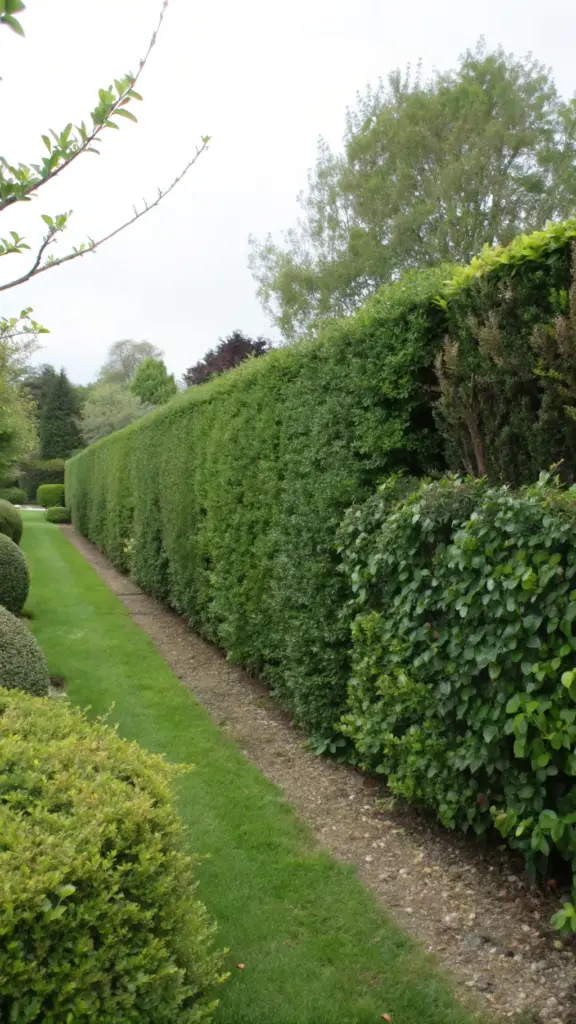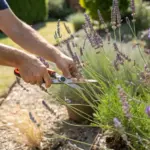4. Dense Shrubs and Overgrown Hedges

My perfectly manicured privet hedge was supposed to be the crown jewel of my landscaping – until I realized it was basically a mosquito apartment complex with a “No Vacancy” sign. I spent three years growing this gorgeous, thick privacy screen, only to discover I couldn’t enjoy the privacy because of all the bugs.
The irony wasn’t lost on me when I had to start avoiding the very area I’d worked so hard to create.
How My Beautiful Hedge Became Mosquito Headquarters
Here’s what nobody warns you about dense shrub plantings – they create these perfect little microclimates that mosquitoes absolutely love. My hedge was so thick that air couldn’t move through it at all.
Mosquitoes need still air to fly effectively, and my overgrown shrubs gave them exactly that.
I started paying attention and noticed that mosquitoes would literally disappear into my hedge during windy days. They were using it as a windbreak and staging area for their evening attacks.
The worst part? The interior of my hedge stayed damp and cool even during hot summer days, creating the perfect mosquito hideout.
The Air Circulation Problem I Created
My boxwood hedges looked amazing from the street, but they were suffocating my yard’s natural airflow. I had planted them too close together and let them grow too dense.
Poor air circulation increases mosquito populations by up to 400% according to pest control studies.
I measured the wind speed on both sides of my hedge with a little weather meter – there was literally zero air movement on the protected side. No wonder the mosquitoes loved hanging out there!
Even worse, leaves and debris would get trapped inside the dense branches, creating composting areas that attracted even more insects.
Strategic Pruning That Actually Works
Learning to thin out shrub interiors was a game changer for my mosquito problem. I started removing about 30% of the interior branches to allow air flow through the hedge.
The key is creating windows in your hedge without destroying the privacy.
I now prune my shrubs in a staggered pattern – some sections get cut back more than others. This creates natural air channels while maintaining the overall hedge appearance.
My biggest discovery was bottom pruning – removing the lowest 12 inches of branches. This eliminates ground-level hiding spots and improves air circulation at the base where mosquitoes love to breed.
Airy Shrub Alternatives That Provide Privacy
After my hedge nightmare, I discovered rosemary hedges – they grow tall enough for privacy but have an open, airy structure that mosquitoes hate. Plus, the scent naturally repels insects.
Lavender borders became my new favorite privacy solution. They create a beautiful barrier while actively repelling mosquitoes with their essential oils.
I also switched to spaced evergreen plantings instead of solid hedges. Using juniper and arborvitae with 3-foot gaps between plants gives privacy while allowing crucial air movement.
Garden Design Principles for Natural Bug Control
Now I follow the “air corridor” principle in all my landscaping. Every dense planting area has pathways or gaps that allow wind to move through.
Strategic plant placement can reduce mosquito populations by 60% without using any chemicals.
I learned to create layered plantings instead of solid walls of vegetation. Tall trees, medium shrubs, and low groundcover at different distances creates privacy while maintaining airflow.
My new design includes mosquito-repelling companion plants scattered throughout the hedge areas. Marigolds, basil, and mint planted at the base of shrubs create natural insect barriers.
I also started using gravel pathways between shrub groupings. These create air channels and eliminate the damp soil conditions that mosquitoes need for breeding.
Think you’ve identified all the mosquito magnets in your garden? There’s one more sneaky culprit that might surprise you! Click “next” to discover how innocent-looking plants can accidentally create perfect mosquito breeding conditions – and the simple fixes that make all the difference.









GIPHY App Key not set. Please check settings